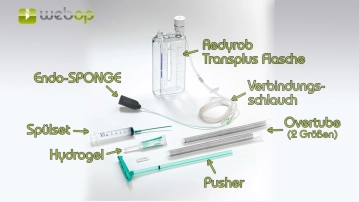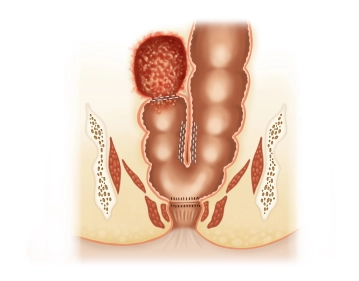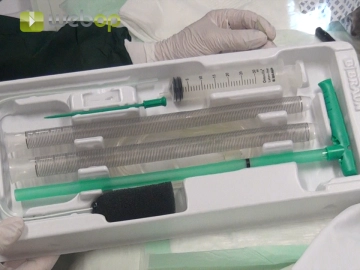-
Endo-SPONGE® – Set
-
Baseline situation
-
Removing the sponge
![Removing the sponge]()
Soundsettings The wound presented in step 1 was treated with an Endo-SPONGE®, which now needs to be replaced.
First, check the sponge position with an endoscope. Then disconnect the system from the vacuum by disconnecting the drainage tube and setting the suction to zero. Now disconnect the draining tube at the Y-connector. After opening the application set, remove the syringe and dilator to irrigate the sponge. Insert the dilator into the tube and attach the syringe. Irrigate the sponge by instilling physiological saline or, as in this example, simethicone, a liquid defoamer, and pull.
Introduce the endoscope and inspect the wound cavity. A clean granulating surface is already visibl
Activate now and continue learning straight away.
Single Access
Activation of this course for 3 days.
Most popular offer
webop - Savings Flex
Combine our learning modules flexibly and save up to 50%.
US$87.56/ yearly payment
general and visceral surgery
Unlock all courses in this module.
US$175.10 / yearly payment




